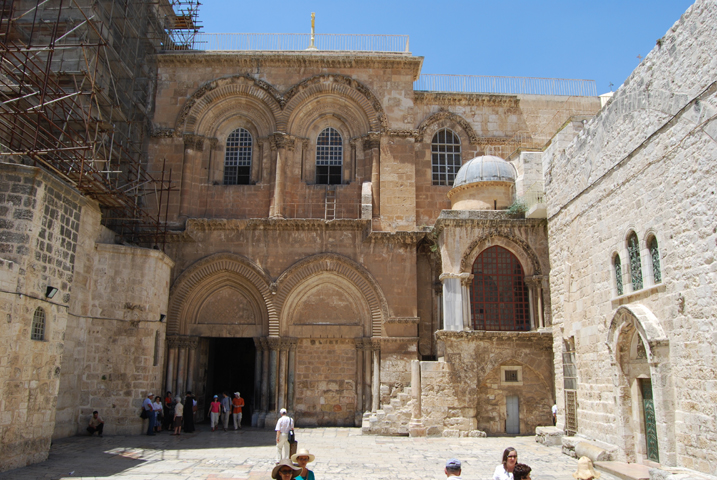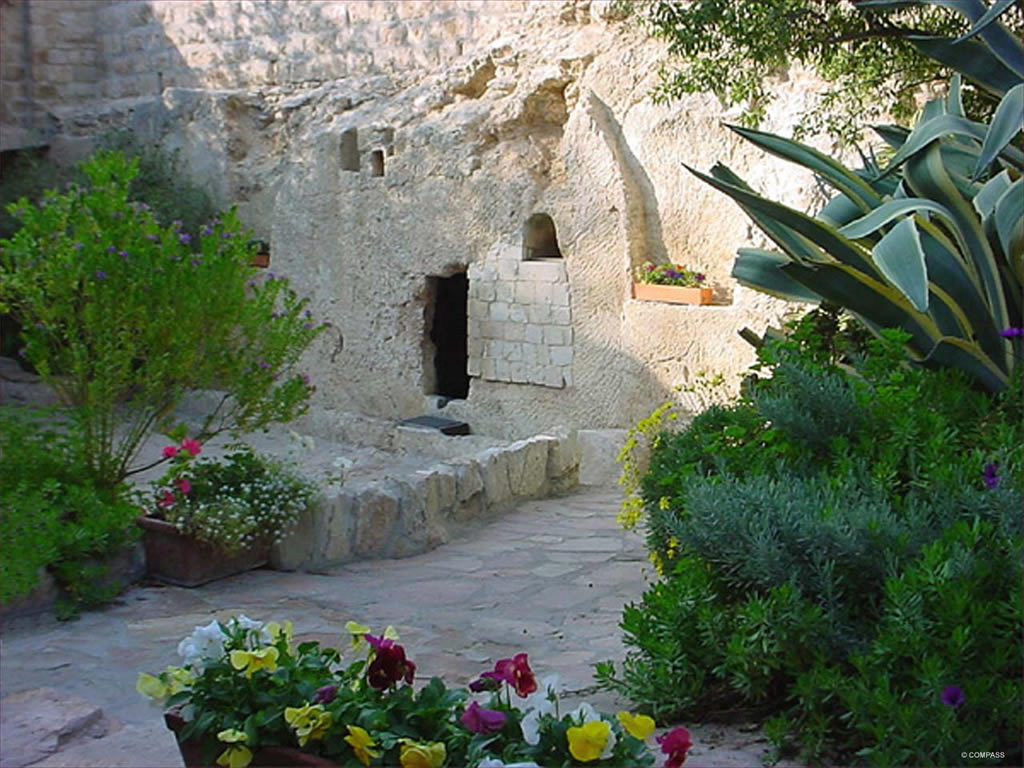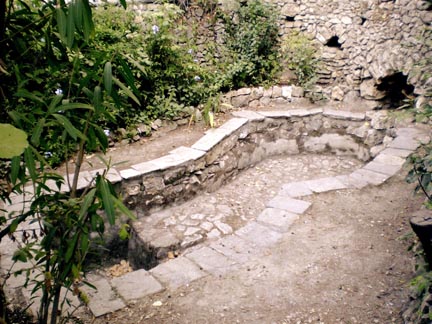“For thou wilt not leave my soul in hell; neither wilt thou suffer thine Holy One to see corruption.” (Psalm 16:10)
“And out of his mouth goeth a sharp sword, that with it he should smite the nations: and he shall rule them with a rod of iron: and he treadeth the winepress of the fierceness and wrath of Almighty God.” (Revelation 19:15)
On this Easter morning, dark and rainy where I live, there is the bright light of the Resurrection to celebrate. For Christians, of course, Jesus Christ is the Messiah, and the very moment of His rising from the grave is considered to be the very core of our faith; Paul spoke of this eloquently.

There is an element of His personality that I’d like to address this morning, as Christians all over the world celebrate. The following is not an attempt to disrespect the Catholic view that Christ’s tomb is in the Church of the Holy Sepulchre;

Protestants usually point to “Gordon’s Calvary” as the spot of the crucifixion and resurrection. Today, this park-like setting, in the midst of a teeming Palestinian population, is a popular destination for pilgrims.
British Major General Charles George Gordon, a Protestant, identified the site as Christ’s tomb, in the late 19th century.
Despite the scholarly controversy over whether this is in fact the location of Christ’s tomb, I will discuss the Resurrection as having taken place at this site on that morning two thousand years ago.
The tomb itself was cut out of solid rock, and is situated very near an oddly featured, small hill just outside of Damascus Gate. Two gaping holes in the hill’s “face” seem to fit well with the traditional “Place of the skull” for the crucifixion.
Yet it is a feature just up the slope from the tomb that I find most compelling, and one that stopped me in my tracks when I saw it for the first time.
As one leaves the tomb and heads toward the exit of the park (through the bookstore—everything in our world today is marketing!), one sees a first-century winepress, excavated just a few years ago.
For me, seeing this is a stunning reminder that Jesus defeated death, that physical, grotesque “thing” that slithered into our world through our first parents.
God has promised in His Word that in the end, He will make all things new, and will make all things right again. Death will no longer touch us. Jesus took care of that when He was literally raised from the dead. Scripture tells us that at the time of the end, He will utterly destroy evil.

And further, the winepress is a reminder that at the consummation of history, He is not returning as a hippy pacifist, as so many liberal scholars and “new evangelicals” seem determined to turn him into. He will return to His city as a conquering King, one who will execute judgment on His enemies.
There is power in prophecy. The power comes when we are able to see just how majestic God is. He said in Isaiah 46 that He keeps His word. As we discussed the past few days, the current international obsession with Jerusalem; the remarkable destruction of the Temple by the Romans, and the implications surrounding Christ’s resurrection are supreme reminders that the Lord of History knows the end from the beginning.
Jesus emerged triumphant from the tomb. He walked over the winepress, looking toward His destiny.

